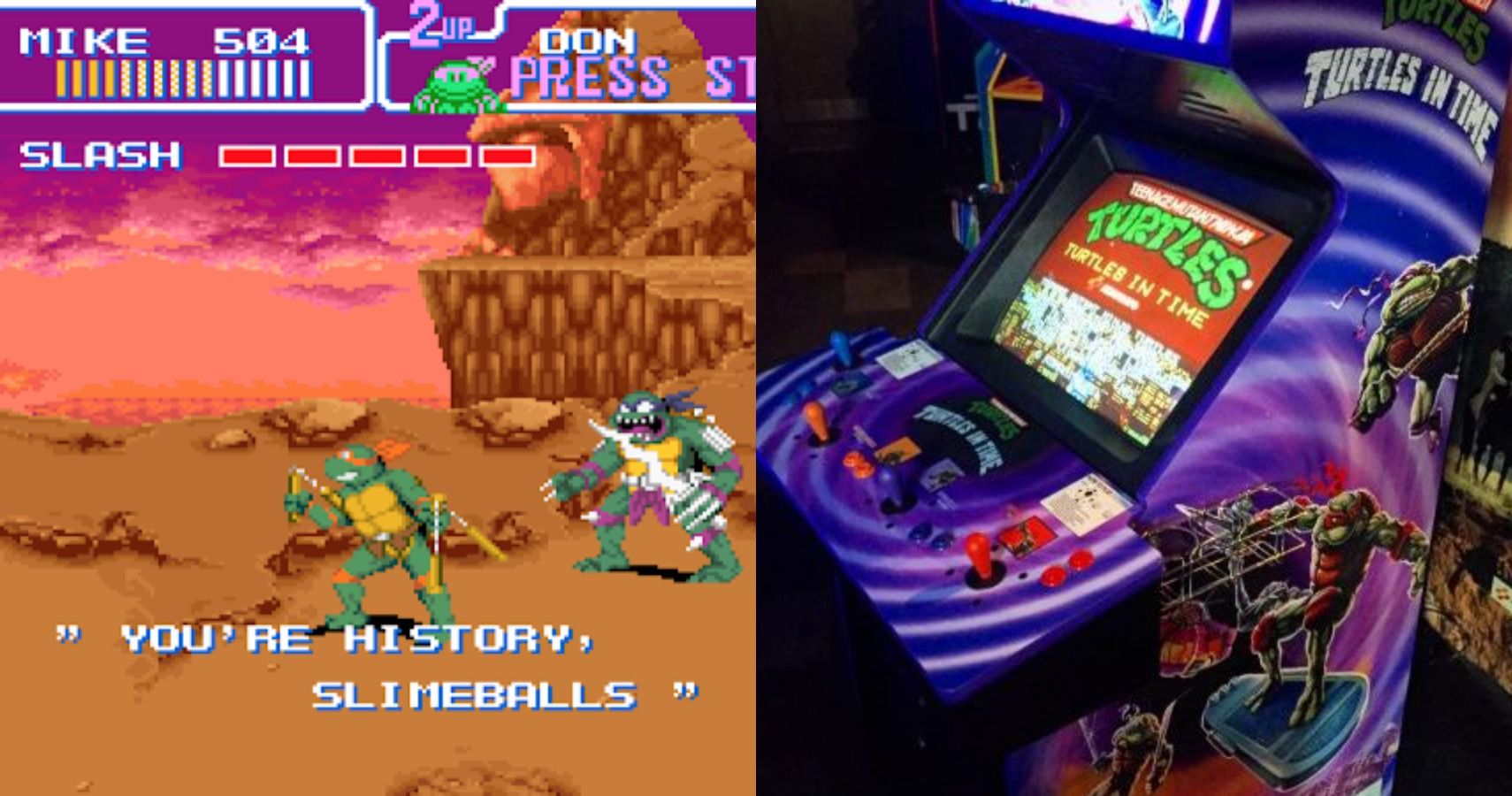
Teenage Mutant Ninja Turtles is one of the most iconic franchises to this day, dating back to its comic book debut in the mid-80s. Not only have these pizza-loving ninjas been the face of popular cartoons, films, and toys, but they also star in one of the most renowned games of the 16-bit era, Turtles in Time.
Though many know the game as one of the standout titles on the Super Nintendo library, it actually got its start on the arcade a year prior. Players tend to point to the SNES version of this Konami classic as the better game, though the arcade version had its strong points as well. In fact, there are quite a few variances and even exclusive elements that each game has, despite being pretty similar overall.
RELATED: Turtles In Time: 10 Bodacious Facts & Trivia About The Game You Probably Didn't Know
This list will take a trip back in time and explore each of every key difference between the arcade originator and '92 port of Turtles in Time.
8 Attract-Mode Intro
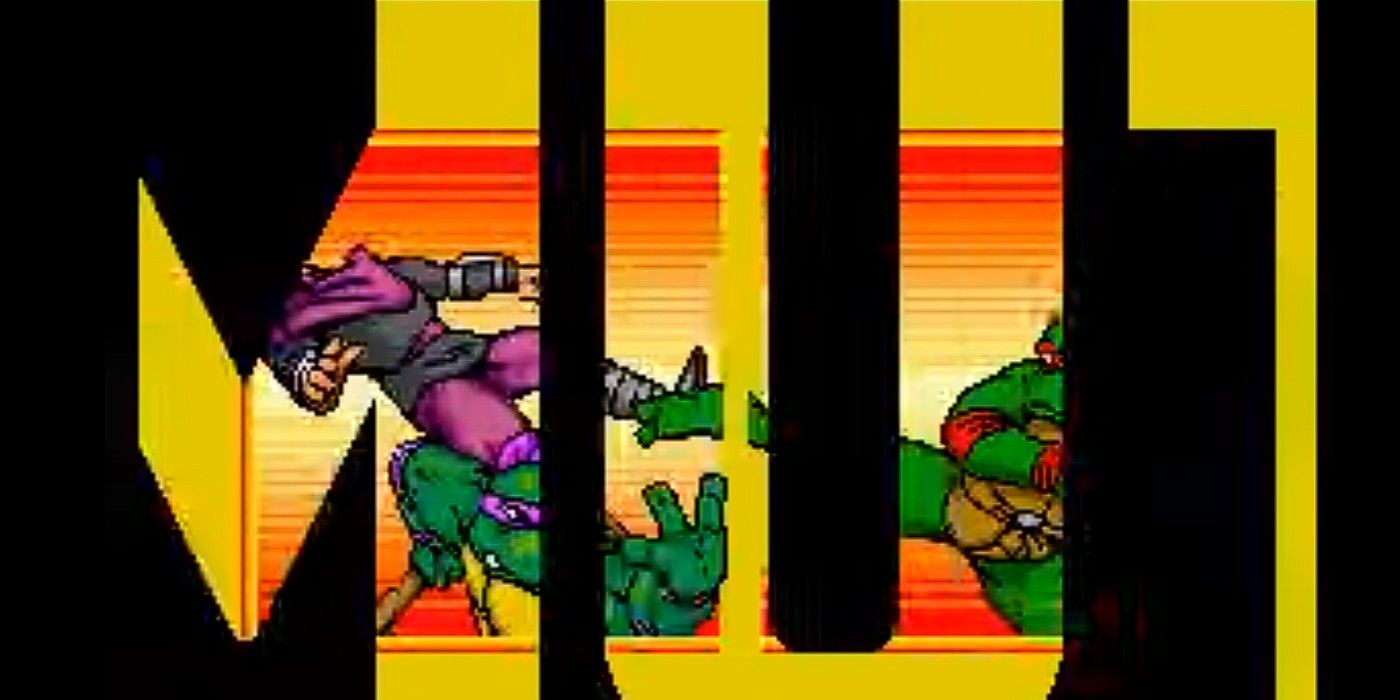
Both of these titles come with their own versions of an "attract mode;" basically an unplayable introduction graphic or animation.
The arcade game portrays pictures of the Turtles behind scrolling text, partaking in various shenanigans like eating pizza and sword-fighting foot soldiers. This is set to the deliciously cheesy song "Pizza Power" from the Coming Out of Their Shells live show.
The SNES game, on the other hand, shows shots that are based on the cartoon show's title sequence, and largely resemble the intro of the original arcade game.
7 A Few Graphical Differences
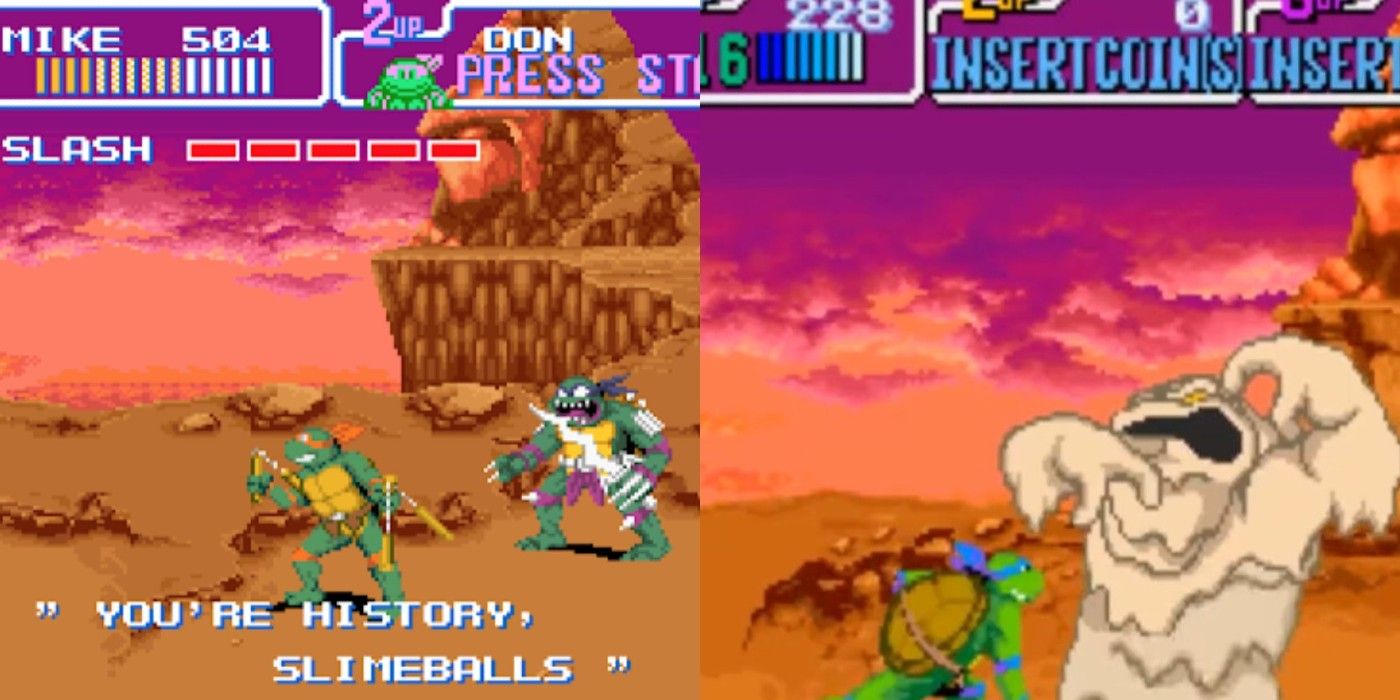
Being near-direct ports released in close proximity, both versions of Turtles in Time look quite similar graphically. However, there are a few minor graphical differences between the two. As arcade machines boast more power than consoles released around the same time, the visuals of the arcade version are a bit sharper and more detailed. Higher-resolution sprites, along with a smoother frame rate, put the '91 original over the top performance-wise.
RELATED: 5 Fighting Games That Are Better In Arcade Cabinets (& 5 Better On Consoles)
On top of this, the SNES version is lacking certain animations and graphic effects that the arcade rendition boasts. Still, Nintendo did have one ace up its sleeve...
6 The Mode 7 Effect
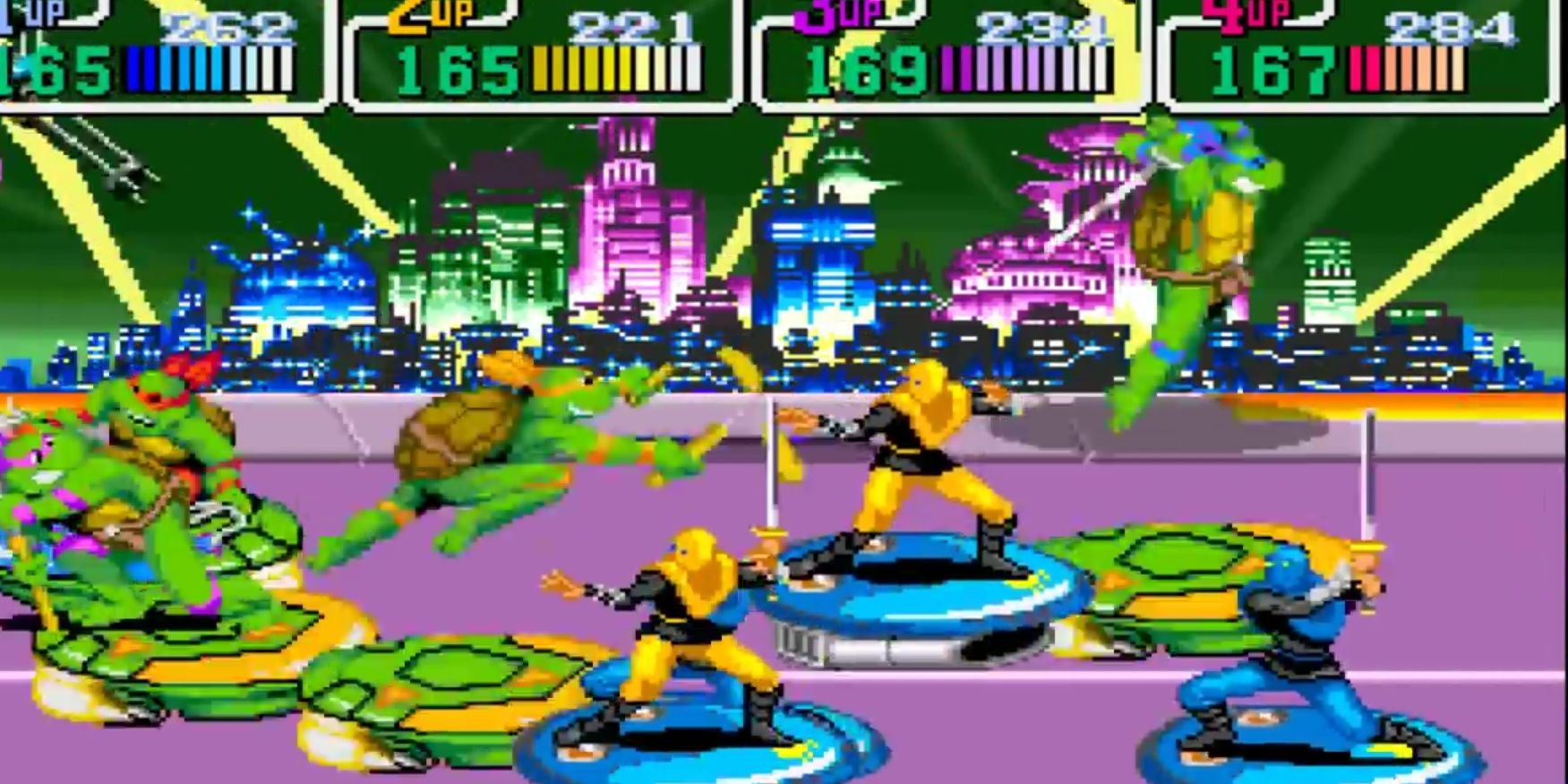
The SNES boasts the ability to display a sort of quasi-3D effect, known as Mode 7. While most known for the appealing visuals of F-Zero, this effect did supplement other games on the system as well. This feature allowed for a handful of cool, flashy exclusives in that version of Turtles in Time that the arcade game couldn't pull off.
This includes the ever-satisfying ability to throw baddies directly at the screen, and allowed for that intense Shredder battletank fight to be included. It also added literal depth to the fan-favorite Neon Night-Riders, which portrays a forward-scrolling dash towards the futuristic city. This is a stark contrast to the more typical sidescrolling bout in the arcade game.
5 Slight Mechanical Differences
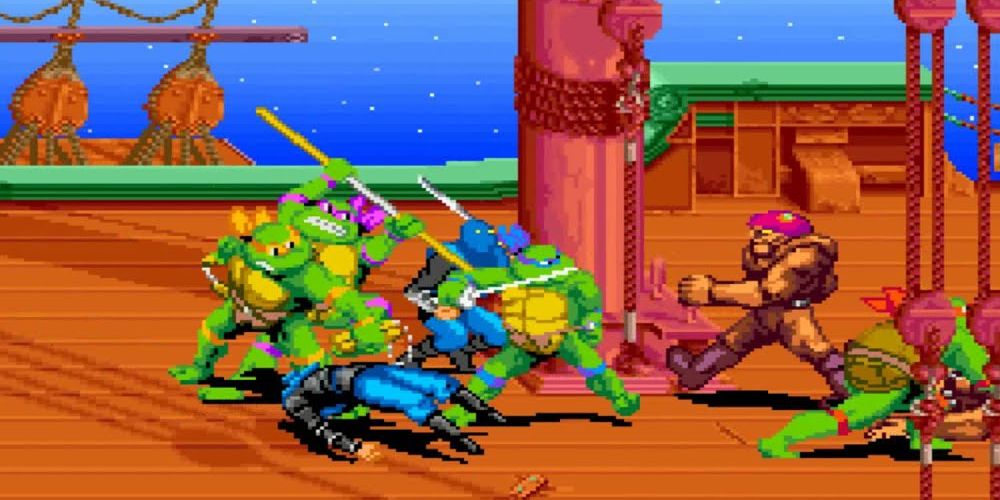
Players of both versions may notice a slight difference in the mechanics and general feel of both games that go beyond the control devices. Some have noted that the controls are a degree less tight and the hitboxes a bit more spotty on the arcade version, compared to the sharper SNES game. The response is a bit swifter and the controls are overall a tad more solid in the latter. This can likely be attributed to coaxing a few more deaths in the arcade version, thus eating more quarters.
Another interesting change involves the mechanics behind the tossing of foot soldiers. While this act is totally random in the arcade game, the SNES game allows players to trigger this fun activity on their own.
4 Time Trial And Versus Modes
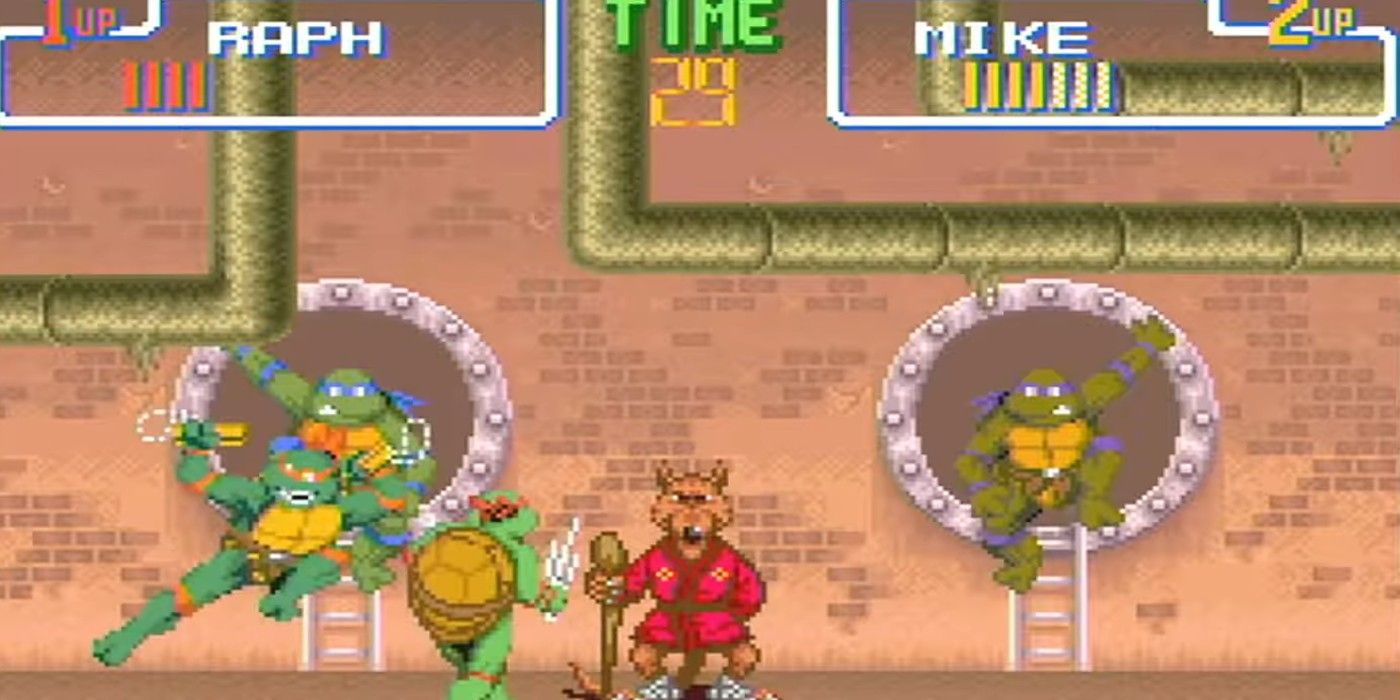
In an effort to beef up the somewhat slim content of Turtles in Time, Konami tosses in a brief-yet-enjoyable Time Trial mode in the SNES game. Here, players are tasked with fending off gaggles of foes before the timer runs out.
RELATED: SNES: 10 Franchises We Need Brought Back For Switch
Not only this, but the game also includes a versus mode, where friends can set aside the comradery and fight each other for Turtle supremacy and bragging rights. It's a rather bare-bones fighting romp, but it makes for a fun little diversion for a few minutes here and there. It can also be a good warm-up before embarking on this perilous trip through time.
3 Some Different Enemies And Bosses
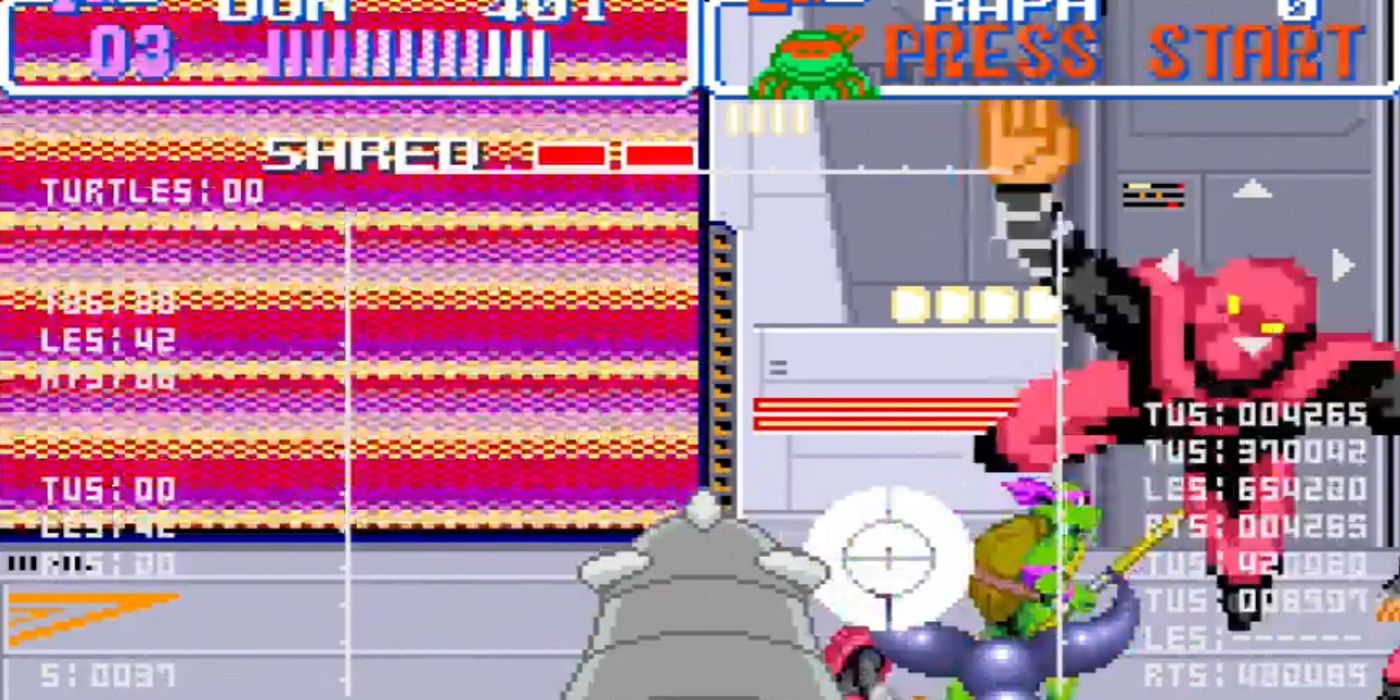
Most of the baddies are consistent in both games, though there are a few notable differences and even exclusives. One example is the inclusion of robots laced with boxing gloves in the arcade version of Alleycat Blues. This is swapped out with the pesky Roadkill Rodneys in the SNES version, who swiftly scurry around the player.
The SNES version also hosts five bosses which are technically unique. There's the menacing turtle Slash in "Prehistoric Turtlesauras," Battletank Shredder, as well as the iconic Rat King and Bebop and Rocksteady. In the arcade version, the amorphous Cement Man replaces the Rat King, and Tokka and Rahzar appear in "Skull and Crossbones" instead of Bebop and Rocksteady, who are absent from the game. Instead of facing the Rat King, an onslaught of Pizza Monsters hits players in "Sewer Surfin."
2 The Number Of Players
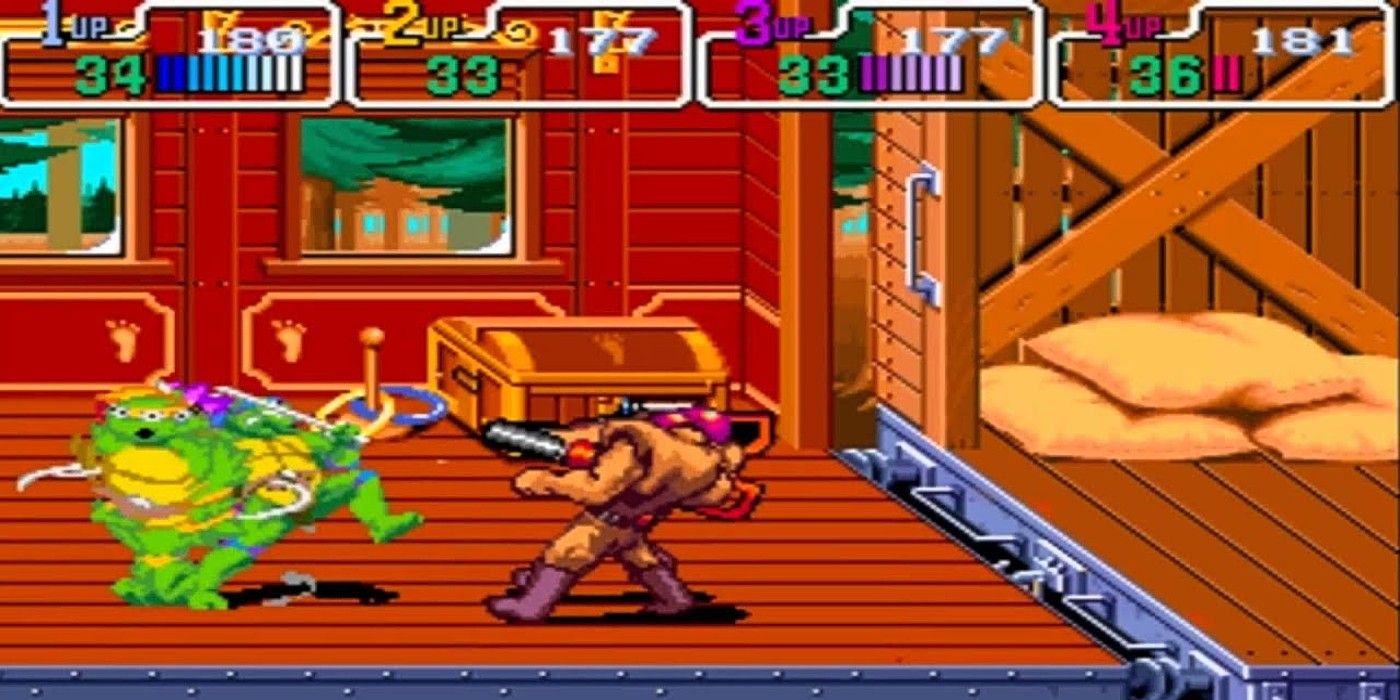
Though the SNES version is generally viewed as the better version of Turtles in Time, it's lacking one key ingredient — the ability to play with four players.
Sure, two-player romps can be fun, but it's tough to match the thrilling action of Don, Mike, Leo, and Raph all kicking some shell at once.
1 Other Minor Variations
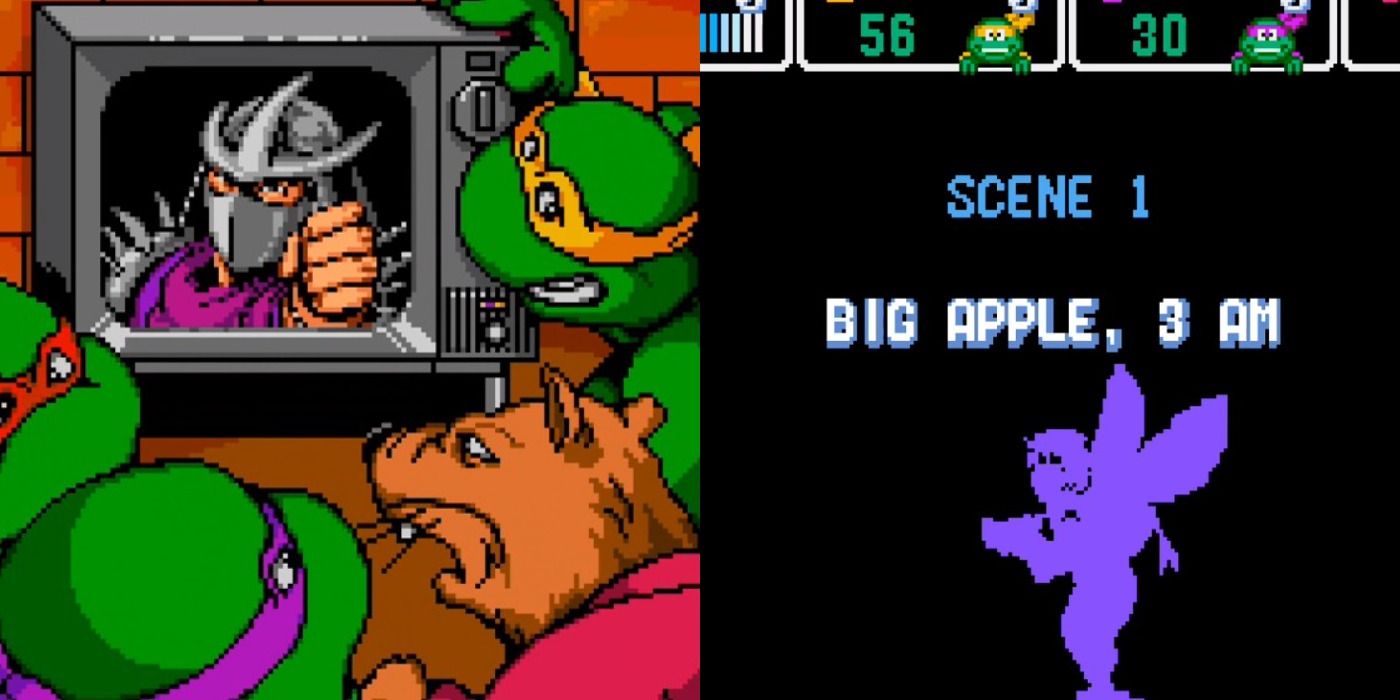
Aside from the differences mentioned, there are a few more minor, but nonetheless interesting variances in both versions. One involves the final face-off with Shredder, who only takes Super Shredder form in the SNES version.
Another involves Leatherhead, who keels over when besting him in the arcade rendition, but oddly leaps off the train in the SNES game. He also enters the scene from offscreen in the SNES game when engaging, while he's already standing in the corner in the arcade rendition. Baxter Stockman also falls on his back in the arcade version when defeated, while the SNES version has his gun exploding and shows him fall out of the building.
A number of voice-over readings sound a bit different too, and the arcade version has quite a few more voice clips than the SNES game.
Also, while most stages are the same in both games, "Sewer Surfin" and "Neon Night-Riders" are relegated to bonus stage status on Super Nintendo, while the fourth stage, "Technodrome: Let's Kick Shell," is exclusive to that version. The arcade game also shows flashes of Splinter scurrying across the screen imploring players to hurry if they stall too long.
Finally, the SNES version displays the "present" time taking place in 1992, whereas the arcade game resides in 1991. This makes sense, given their respective release dates.
NEXT: Teenage Mutant Ninja Turtles Shredder's Revenge: 10 Things We Need To See In The Game

